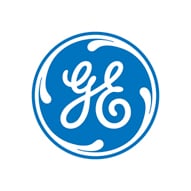As Conglomerates Outperform in 2013, What to Expect Now: GE, 3M, UTX, Honeywell
August 13, 2013 by Jon C. Ogg
Our stock screen search showed conglomerates leading the S&P 500 Index in our Finviz.com market snapshot. In fact, conglomerates were the single best category on a one-day, one-week (up 0.5%), one-month (up 3.8%) and three-month (7.8%) basis. Finviz showed that the conglomerates sector was the second best in the past six months (with 16.6% gains) but led all sectors year-to-date with gains of 28.7%. Over the past year, the sector is the third best of the nine major sectors, with gains of 32%, but that is right behind the number-two services sector gains of 32.2% and less than 1% under the financial sector at 32.9%.
So how does the market stack up for conglomerates ahead? We have reviewed Berkshire Hathaway Inc. (NYSE: BRK-A), General Electric Co. (NYSE: GE), 3M Co. (NYSE: MMM), Honeywell International Inc. (NYSE: HON) and United Technologies Corp. (NYSE: UTX) to see which conglomerates have performed the best and which had the most implied upside, according to Wall St. analysts. We also considered their forward P/E ratios and their dividends for a trade-off in a valuation analysis.
Berkshire Hathaway Inc. (NYSE: BRK-A) is extremely difficult to evaluate on traditional metrics. It pays no dividend, it has A-shares and B-shares, and its analyst following is very limited. That being said, Team Warren Buffett’s great American growth story is up a whopping 31% year-to-date in 2013. This is statistically unheard of, if you have been a Buffett follower over the past decade or so.
General Electric Co. (NYSE: GE) is within 3% of a multiyear post-recession high. Its shares are up about 18%, and the conglomerate keeps angling to lower its exposure to GE Capital so that it can get an industrial valuation, more than a valuation as an industrial giant with a huge banking and finance operation. At $24.25, GE trades at 14.6 times expected 2013 earnings and 13.2 times expected 2014 earnings. The consensus price target of $25.85 implies upside of almost 7%, but GE also leads the conglomerate peers in dividends with its 3.1% yield.
3M Co. (NYSE: MMM) is within about 1.5% of an all-time high and shares are up 28% year-to-date. At $117.55, 3M trades at 17.5 times expected 2013 earnings and about 16 times expected 2014 earnings. The consensus price target of $118.40 implies upside of only about 1%. While 3M has raised its dividend over and over, it yields about 2.1% now that shares have appreciated so much.
Honeywell International Inc. (NYSE: HON) is within 2% of all-time highs, but investors may want to take note that shares are up a sharp 33% year-to-date. At $83.50, Honeywell trades at almost 17 times expected 2013 earnings and 15 times expected 2014 earnings. The consensus price target of $87.08 implies upside of barely 4%, and Honeywell’s shares have done well enough that its dividend yield is down to 2.1% now.
United Technologies Corp. (NYSE: UTX) is within about 2% of its all-time high, and shares are up 30% year-to-date. With its shares trading at $105.50, UTX is currently valued at about 17 times expected 2013 earnings and 15 times expected 2014 earnings. The consensus price target of $115.67 implies upside of almost 10%, but UTX has the lowest conglomerate dividend, at 2.0%.
What this latest conglomerate screen indicates is that GE is underperforming, has attractive upside against peers and leads the pack in the conglomerate dividend yields above 3% that we expect to go even higher later in 2013. GE is still trying to exit many financial operations, and that could on the surface make many analysts consider it a no-growth or slow-growth story. It appears to be the best positioned for earnings valuations as well.
Stay tuned.
Sponsored: Find a Qualified Financial Advisor
Finding a qualified financial advisor doesn’t have to be hard. SmartAsset’s free tool matches you with up to 3 fiduciary financial advisors in your area in 5 minutes. Each advisor has been vetted by SmartAsset and is held to a fiduciary standard to act in your best interests. If you’re ready to be matched with local advisors that can help you achieve your financial goals, get started now.